In the 200 years since the first dinosaur was named what have we learned?
- Published
- comments
It's the 200th anniversary of when the first dinosaur was officially named.
The first time a dinosaur was unearthed by humans and officially named was 200 years ago.
Over the two centuries since the naming of Megalosaurus in 1824, dinosaur science has grown rapidly.
Technology has helped us understand what these creatures looked like, how they lived, how they evolved and ultimately how they died.
So how much more do we now know about these amazing creatures?
Who named the first dinosaur?
William Buckland was an English naturalist, who studied nature, and named the first dinosaur in 1824.
An enormous jaw and limb bones were unearthed in a slate quarry in the village of Stonesfield near Oxford.
Buckland recognised these fossils belonged to a huge reptile that was not a known living species.
On 20 February 1824, he addressed the Geological Society of London, and gave the reptile a formal scientific name: Megalosaurus, meaning "great lizard".
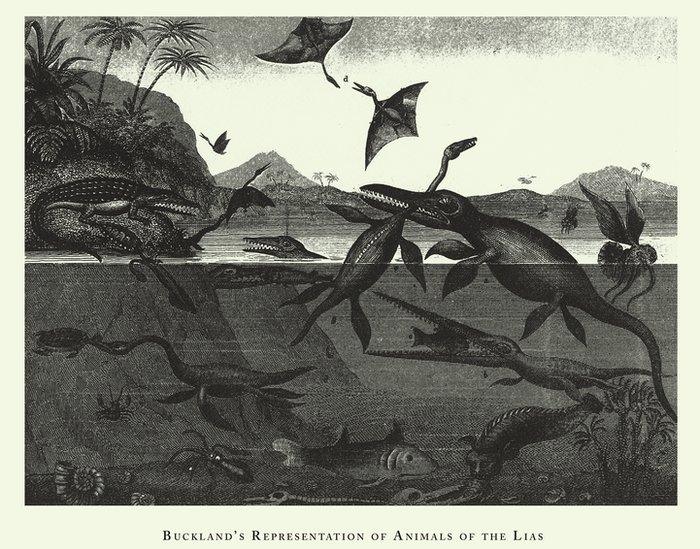
It was the first time a dinosaur had been officially recognised, but they were not known as dinosaurs until the 1840s.
These special first fossils are now kept at Oxford University Museum of Natural History.
"It was the beginning of our fascination with dinosaurs," University of Edinburgh palaeontologist Steve Brusatte said.
"[Buckland's] announcement opened the flood gates and started a fossil rush, and people went out looking for other giant bones in England and beyond."
What are the biggest dinosaur discoveries of the last 200 years?
"Buckland and other gentlemen naturalists of the early 19th Century would be stunned at how much we now know about dinosaurs," Brusatte said.
At the time Buckland thought the remains were those of a lizard measuring around 66 feet (20 metres) long, that walked on four legs and could live both on land and in water.
Scientists now know the fossils belonged to the theropod group of meat-eating dinosaurs, that walked only on their hind legs, and were around 30 feet (9 metres) long.
Our understanding of dinosaurs has changed significantly since the 19th century.
How long ago did dinosaurs actually live on Earth?
Like others at the time, Buckland did not grasp how long ago dinosaurs had lived, believing Earth to be only a few thousand years old.
Scientists now know Earth is about 4.5 billion years old, and the Megalosaurus lived about 165 million years ago.
But it took several decades for geologists to understand the Earth was so ancient, and that life has evolved over vast stretches of time.
Brusatte said: "Dinosaurs and the other fossils being discovered were a huge impetus in this bombshell change in people's understanding of their place in the world."
When did people start calling them 'dinosaurs'?
Following Buckland's discovery naturalist Richard Owen recognised the fossils found in southern England of Megalosaurus and two other large land-dwelling reptiles, Iguanodon and Hylaeosaurus, formed a common group.
He referred to them as "Dinosauria" in an 1841 lecture and again in a publication the following year.
Then scientists realised some of these creatures walked on two legs
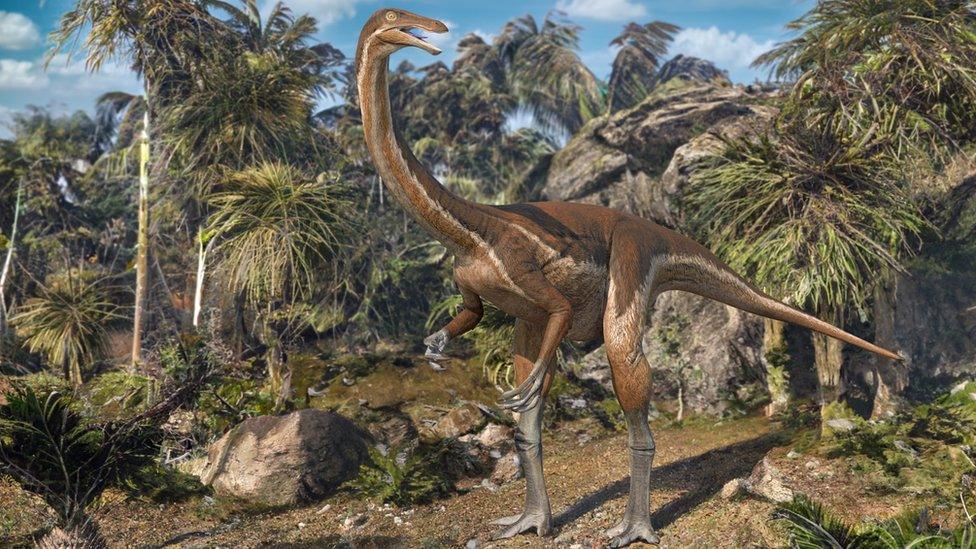
After the discovery of Hadrosaurus and Dryptosaurus fossils in the US state of New Jersey, in 1858 and 1856, experts realised that at least some dinosaurs were bipeds - meaning they could walk upright on their two hind legs.
This changed the earlier belief that dinosaurs had resembled a reptile version of a rhinoceroses.
Learning about many more dinosaur species
Beginning around the 1870s, the discovery of the first complete large dinosaur skeletons showed the distinctive anatomy and diversity of dinosaurs.
In the 1960s, the identification of the smaller meat-eating dinosaur, Deinonychus, shook up dinosaur science starting a research period known as the "Dinosaur Renaissance".
It showed that dinosaurs could be small and agile, and that some had similar body shapes to early birds like the Archaeopteryx - confirming how birds had evolved from smaller dinosaurs.
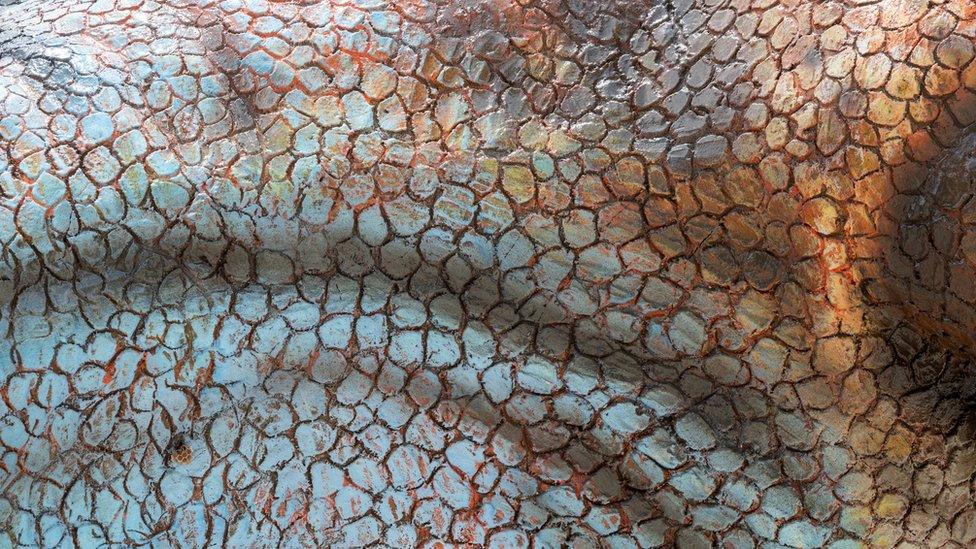
One big discovery was that not all dinosaurs had scales - some had feathers
It also led to a debate over whether dinosaurs were warm-blooded like birds, contradicting the long-standing conception of them as slow, lumbering and cold-blooded.
Now most scientists believe dinosaurs were warm-blooded.
Palaeontologist Hans-Dieter Sues works at the Smithsonian Institution's National Museum of Natural History in Washington.
He said: "Regarding discoveries about dinosaurs in recent decades, the most important one to my mind is the discovery that at least meat-eating dinosaurs, theropods, had feathers rather than scales and that some had really well-developed feathers on their arms even though they were, for a variety of reasons, incapable of flight.
"Presumably these feathers, which were often colourful, provided insulation for the body and, in at least some species, were used for display."
Understanding how their bodies worked
Palaeontologists placed some cranial fossils into CT scanners - highly detailed X-ray machines - to build digital models of dinosaur brains and ears, to gain better knowledge of dinosaur senses like sight, hearing and smelling.
Researchers can now describe the colour of a dinosaur if their skin or feathers are sufficiently well preserved to retain microscopic melanosome bubbles that hold pigment in cells.
More than 2,000 dinosaur species are now known and remarkable fossil finds are being made in places such as China, Argentina, Brazil, South Africa and Mongolia.
How the dinosaurs became extinct
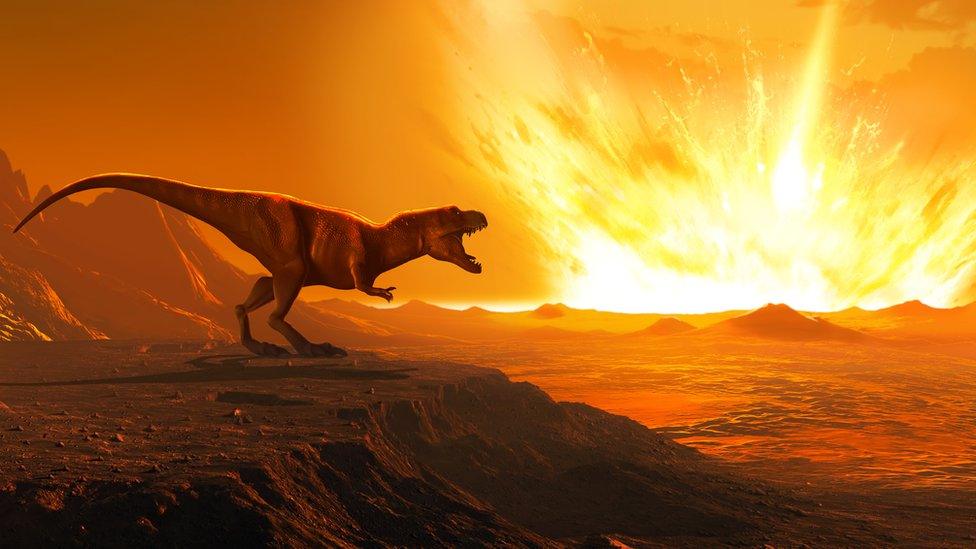
The extinction of the dinosaurs has long puzzled scientists.
In 1980, researchers identified a layer of rock dating to the end of the dinosaur age, which contained high concentrations of iridium - an element common in meteorites.
This indicated that a huge space rock had struck Earth, with a possible location found to be The Chicxulub crater at Mexico's Yucatan Peninsula - 112 miles (180 km) wide.
This was later identified as the impact site of an asteroid. It is widely believed by scientists that this asteroid wiped out three-quarters of Earth's species, including the dinosaurs.
- Published6 February 2024
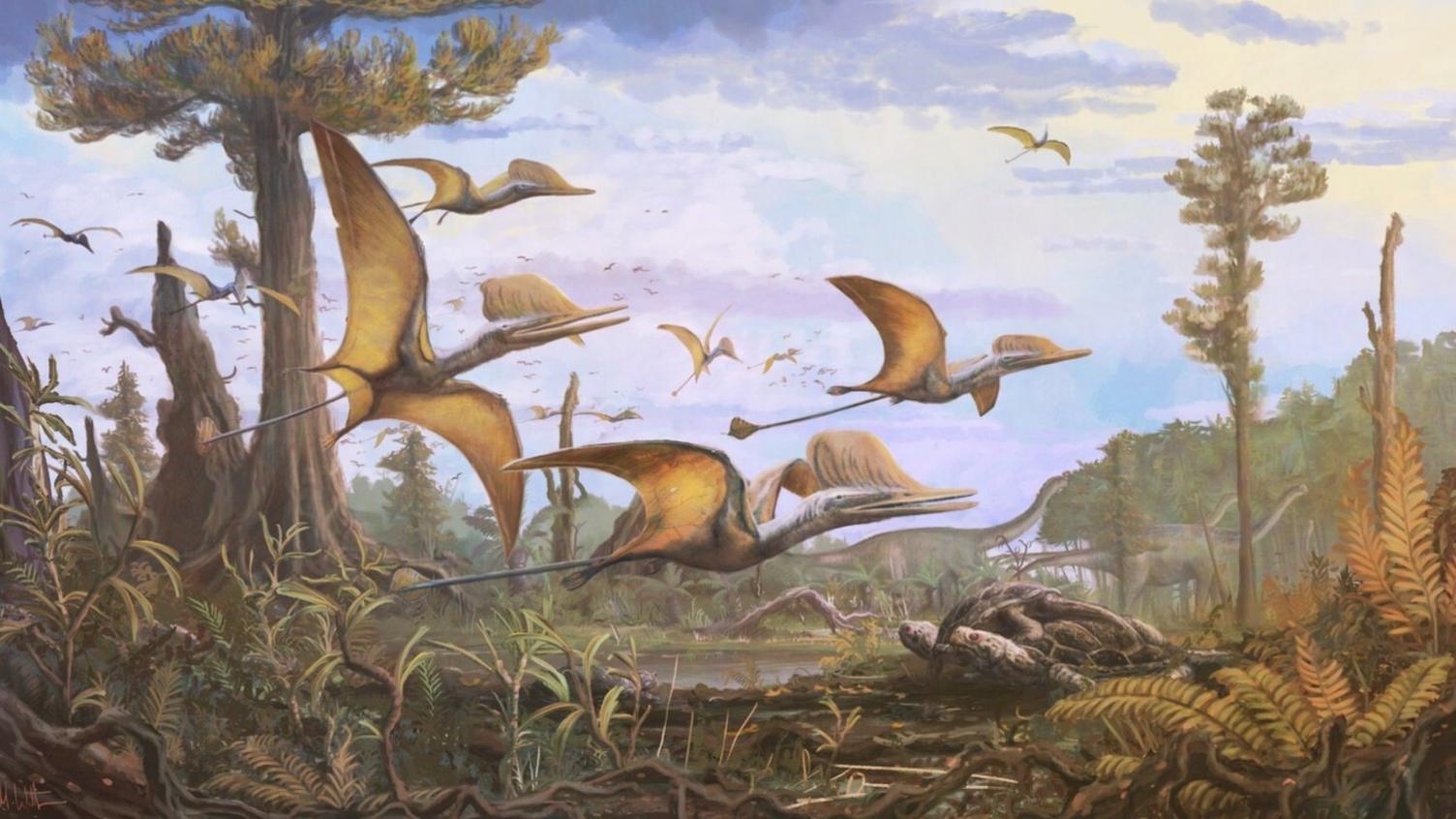
- Published22 May 2023
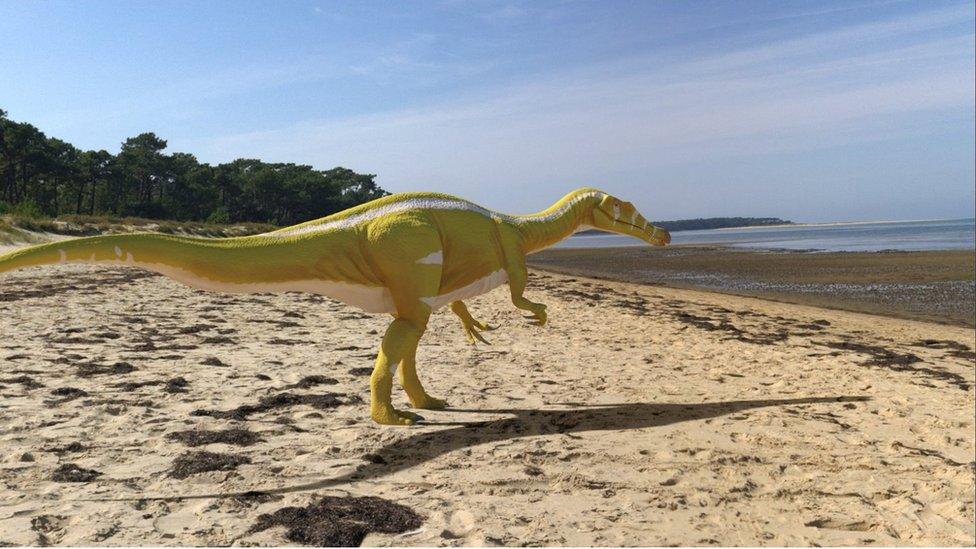
- Published19 September 2023

